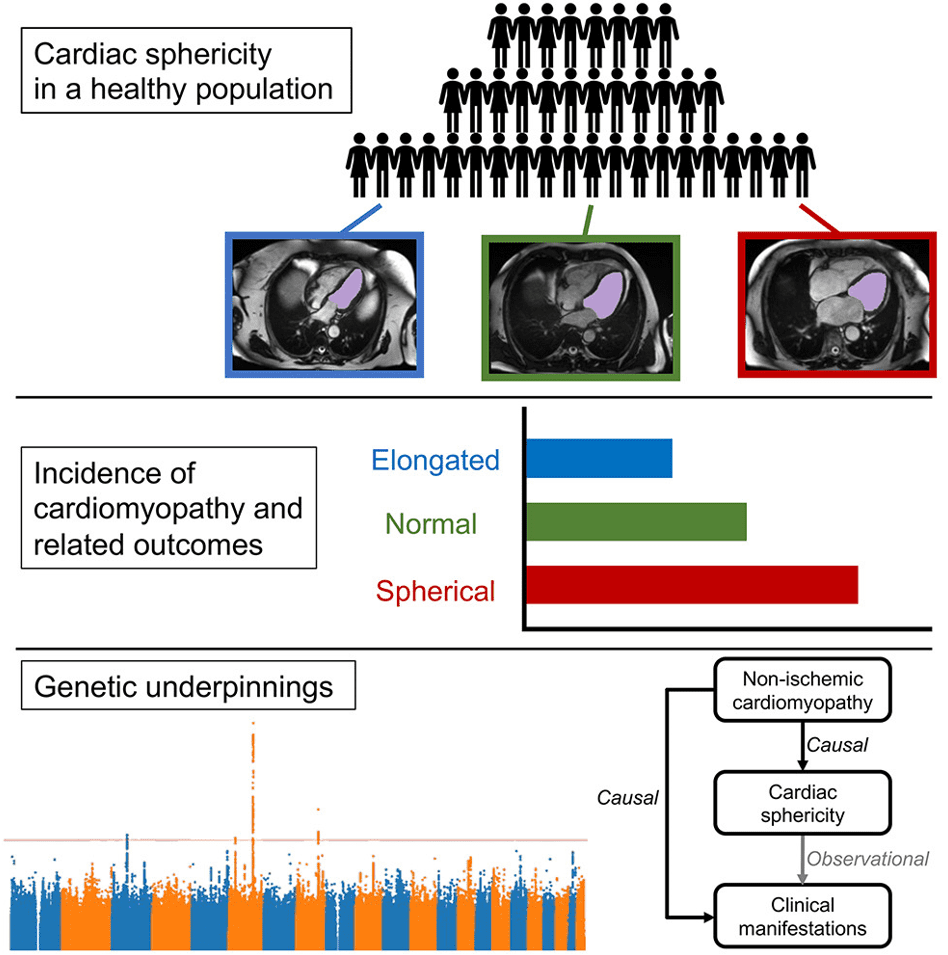Can the Shape of Your Heart Predict Your Health Future?
According to recent research conducted by the Smidt Heart Institute, the shape of your heart and certain genetic markers may serve as predictors for the likelihood of developing heart muscle disease and atrial fibrillation. If you’re curious about your susceptibility to these two common heart conditions, your doctor may recommend an examination of your heart’s shape.
The investigators at Cedars-Sinai’s Smidt Heart Institute have uncovered that individuals with round hearts similar in shape to baseballs are at a higher risk of experiencing heart failure and atrial fibrillation in the future, in contrast to those with elongated hearts resembling the traditional Valentine heart.
“Roundness of the heart isn’t necessarily the problem per se—it’s a marker of the problem,” says co-corresponding author Shoa L. Clarke. “People with rounder hearts may have underlying cardiomyopathy or underlying dysfunction with the molecular and cellular functions of the heart muscle. It could be reasonable to ask whether there is any utility in incorporating measurements of sphericity into clinical decision-making.”
Their study, which was published in Med—Cell Press‘ a peer-reviewed medical journal, employed advanced imaging analysis and deep learning techniques to investigate the genetics of heart structure, yielding informative results.

They “found that individuals with spherical hearts were 31% more likely to develop atrial fibrillation and 24% more likely to develop cardiomyopathy, a type of heart muscle disease,” according to cardiologist David Ouyang from the Smidt Heart Institute.
By examining cardiac MRI images from 38,897 healthy individuals from the UK Biobank, researchers were able to identify the risk factors for the aforementioned cardiac conditions. Computational models were subsequently utilized to pinpoint the genetic markers of the heart linked to these conditions using the same database.
Ouyang explained that through examining the genetics of sphericity, they were able to identify four genes linked to cardiomyopathy, namely PLN, ANGPT1, PDZRN3, and HLA DR/DQ. In addition, the first three genes were also associated with an increased likelihood of developing atrial fibrillation.
Atrial fibrillation is the most prevalent type of irregular heart rhythm disorder, which significantly elevates the risk of stroke for an individual. The prevalence of this condition is increasing and is projected to affect 12.1 million people in the United States by the year 2030.
Cardiomyopathy is a heart muscle disease that makes it difficult for the heart to pump blood to the rest of the body, potentially resulting in heart failure. Dilated, hypertrophic, arrhythmogenic, and restrictive are the main types of cardiomyopathies and are believed to impact up to 1 in every 500 adults.
According to cardiologists at Cedars-Sinai, the shape of one’s heart tends to change over time, becoming more spherical in shape, particularly after a major cardiac event such as a heart attack.
Christine M. Albert, MD, MPH, who is the Chair of the Department of Cardiology at the Smidt Heart Institute and a co-author of the study, stated that alterations in the shape of the heart could be an early indication of disease. The expert further added that comprehending how the heart transforms in response to illness, combined with the use of more accurate and user-friendly imaging, is a crucial step in the prevention of two debilitating diseases.
According to Ouyang, these discoveries offer greater insight into the potential use of cardiac imaging to improve the diagnosis and prevention of numerous conditions. However, he highlighted the importance of conducting further research.
“They say a picture is worth a thousand words, and we show that this is very true for medical imaging,” adds Ouyang. “There’s a lot more information available than what physicians are currently using. And just as we’ve previously known that a bigger heart isn’t always better, we’re learning that a rounder heart is also not better.”
Image Credit: Getty
